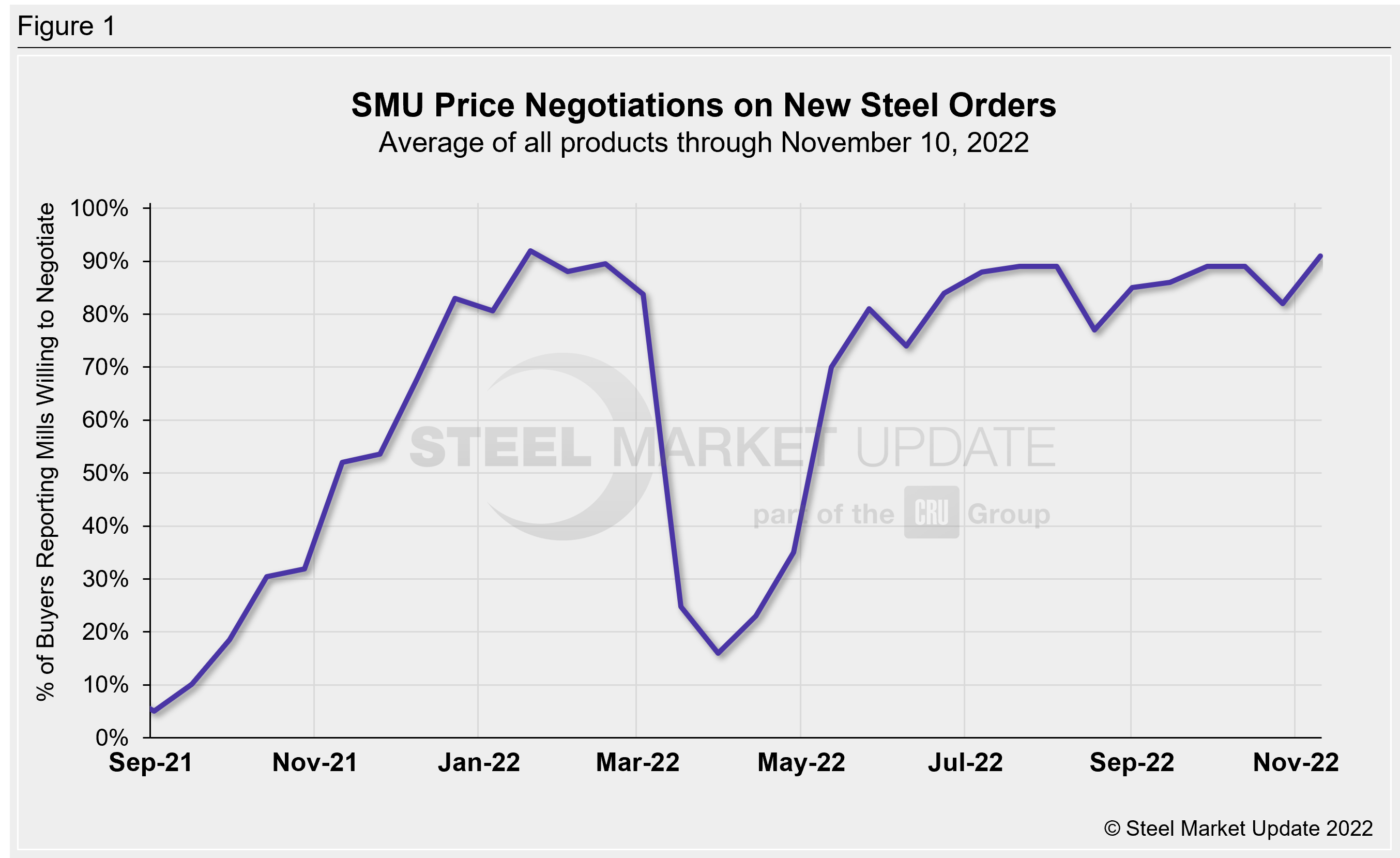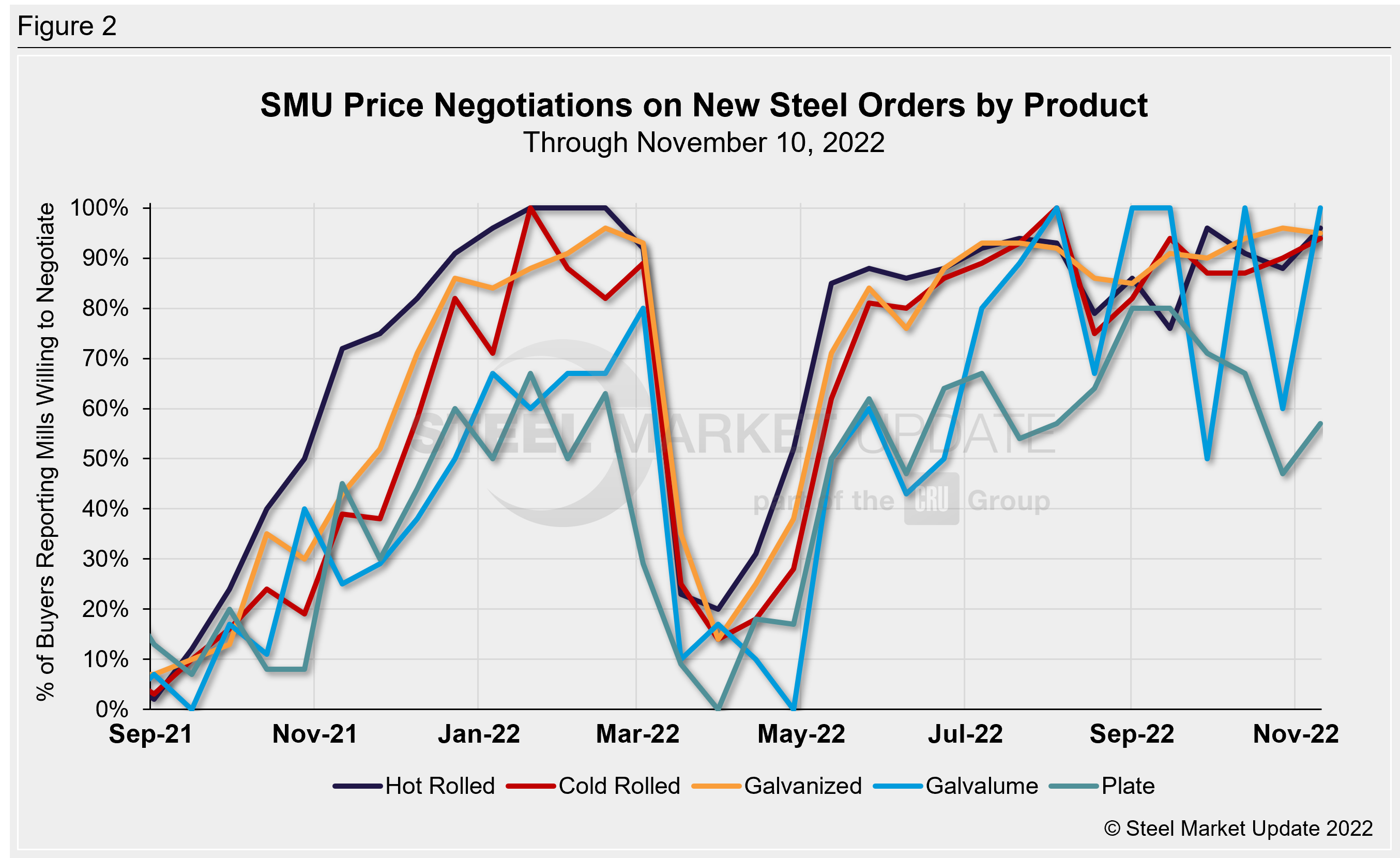Market Data

November 10, 2022
Mill Willingness to Negotiate Remains High
Written by Brett Linton
Steel buyers continue to hold the upper hand in price negotiations with mills — a position they have enjoyed for nearly six months. A very high percentage of sheet buyers continue to report that mills are willing to talk price to secure an order. Negotiations on plate products are not as common, with slightly more than half of buyers reporting they have bargaining power on new orders.
Steel Market Update asks hundreds of steel buyers every other week: Do you find domestic mills are willing to negotiate spot pricing on new orders? On average, 91% of steel buyers polled this week reported that mills were willing to negotiate lower prices on new orders. This is now the highest rate recorded since January. As shown in Figure 1, negotiation rates have remained relatively high for quite some time.

Figure 2 below shows negotiation rates by individual product. This week, 96% of hot rolled buyers responded that mills are willing to negotiate on price. This is up from 88% two weeks earlier and one of the highest rates seen since February. Hot rolled negotiation rates have been 76% or higher since May.
94% of cold rolled respondents reported that mills were willing to talk price. This is up from 90% two weeks ago and up from 87% one month prior.
For galvanized buyers, 95% responded that mill prices are negotiable this week. This is down just 1% from late October, when we saw the highest rate recorded in over eight months. Galvanized negotiation rates have been 90% or higher for the past two months.
Galvalume negotiation rates tend to be more volatile due to the smaller market size. 100% of buyers reported that mills are negotiable on new orders this week, up from a 60% rate two weeks prior.
Negotiations have been slightly less common in the plate market. 57% of buyers this week reported a willingness to negotiate, up from 47% two weeks earlier, but down from 67% one month ago. Plate negotiation rates were as high as 80% in September. Recall we saw plate negotiation rates between 0–18% in March and April.
SMU’s Price Momentum Indicator was adjusted from Neutral to Lower on Oct. 11 for all products, in consideration of increased supply, weaker demand, and lower raw material costs.

Note: SMU surveys active steel buyers every other week to gauge the willingness of their steel suppliers to negotiate pricing. The results reflect current steel demand and changing spot pricing trends. SMU provides our members with a number of ways to interact with current and historical data. To see an interactive history of our Steel Mill Negotiations data, visit our website here.
By Brett Linton, Brett@SteelMarketUpdate.com






